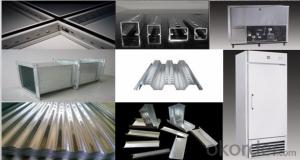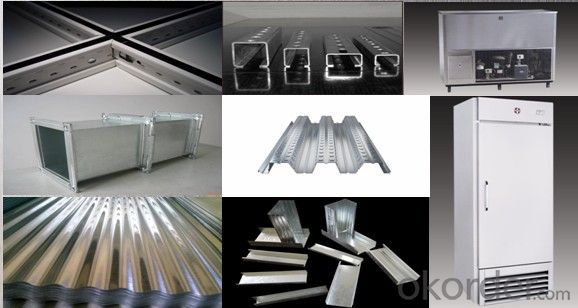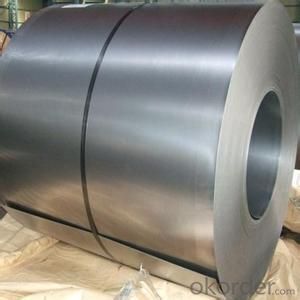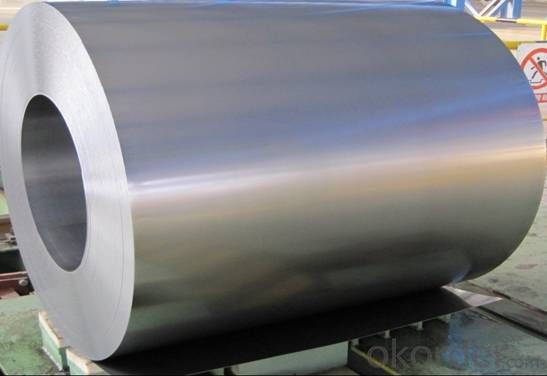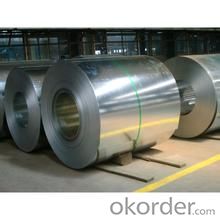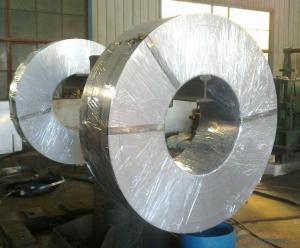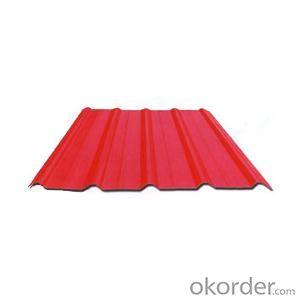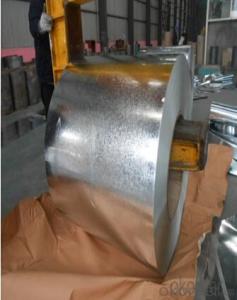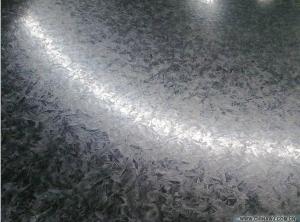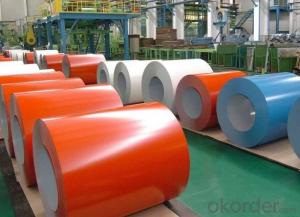Hot-dip Zinc Coating Steel Building Roof Walls in Best Price
- Loading Port:
- China main port
- Payment Terms:
- TT OR LC
- Min Order Qty:
- 50 m.t.
- Supply Capability:
- 10000 m.t./month
OKorder Service Pledge
OKorder Financial Service
You Might Also Like
Hot-dip Zinc Coating Steel Building Roof Walls
1.Structure of Hot-Dip Galvanized Steel Sheet Description:
Hot-dip galvanized steel coils are available with a pure zinc coating through the hot-dip galvanizing process. It offers the economy, strength and formability of steel combined with the corrosion resistance of zinc. The hot-dip process is the process by which steel gets coated in layers of zinc to protect against rust. It is especially useful for countless outdoor and industrial applications. Production of cold formed corrugated sheets and profiles for roofing, cladding, decking, tiles, sandwich walls, rainwater protective systems, air conditioning duct as well as electrical appliances and engineering.
2.Main Features of the Hot-Dip Galvanized Steel Sheet:
• Excellent process capability
• Smooth and flat surface
• Workability, durability
• Excellent anticorrosive property
• High strength
• Good formability
• Good visual effect
3.Hot-Dip Galvanized Steel Sheet Images
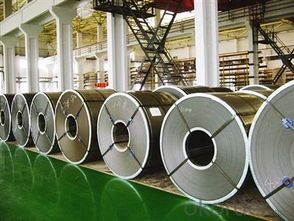
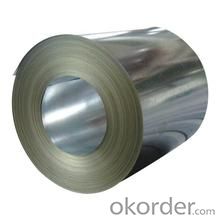
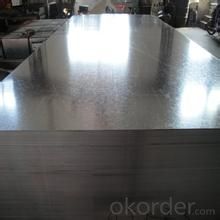
4.Hot-Dip Galvanized Steel Sheet Specification
Standard: ASTM, JIS,EN
Grade: CS, DX51D+Z,SGCC, SS 230~550,S220GD+Z~S550GD+Z, SGC340~SGC570
Thickness: 0.18mm~5mm
Width: max 2000mm
Coil weight:3-12 MT
Coil ID:508/610mm
Surface structure: zero spangle, regular spangle or minimum spangle
Surface treatment: Chromate treatment, Oiled/dry, skinpassed/non-skinpassed
Packing: Standard seaworthy export package
Technology test results:
Processability | Yield strength | Tensile strength | Elongation % | 180°cold-bending |
Common PV | - | 270-500 | - | d=0,intact,no zinc removal |
Mechanical interlocking JY | - | 270-500 | - | d=0,intact,no zinc removal |
Structure JG | >=240 | >=370 | >=18 | d=0,intact,no zinc removal |
Deep drawn SC | - | 270-380 | >=30 | d=0,intact,no zinc removal |
EDDQ SC | - | 270-380 | >=30 | d=0,intact,no zinc removal |
5.FAQ of Hot-Dip Galvanized Steel Sheet
We have organized several common questions for our clients,may help you sincerely:
1.How to guarantee the quality of the products?
We have established the international advanced quality management system,every link from raw material to final product we have strict quality test;We resolutely put an end to unqualified products flowing into the market. At the same time, we will provide necessary follow-up service assurance.
2. How long can we receive the product after purchase?
Usually within thirty working days after receiving buyer’s advance payment or LC. We will arrange the factory manufacturing as soon as possible. The cargo readiness usually takes 15-30 days, but the shipment will depend on the vessel situation.
- Q: How are steel coils used in the manufacturing of automotive wheels?
- Steel coils are used in the manufacturing of automotive wheels as the primary raw material. These coils are first processed through a series of cutting, bending, and shaping processes to form the wheel rims. The steel's strength and durability make it an ideal material choice for withstanding the weight and stresses of a vehicle. Additionally, the coils undergo various heat treatment and finishing processes to enhance their resistance to corrosion and provide a smooth surface for painting or coating. Ultimately, steel coils play a crucial role in the production of automotive wheels, ensuring their structural integrity and performance on the road.
- Q: My company want to welding stainless steel, do not know to use what welding machine?
- Stainless steel is a fascinating metal to weld. Welding stainless can be difficult if you don't know what you are doing. It reacts to excessive heat by warping and distorting once it cools. Everything shows up in stainless. If you weld with too much heat you can see it by the heat marks left in the metal along with any distortion. It also scratches very easily so you must take care when welding on a metal table. Stainless steels can be welded using several different procedures such as shielded metal arc welding, gas tungsten arc welding, and gas metal arc welding but stainless steel welding wires have been developed for welding stainless steels.
- Q: What are the dimensions of steel coils used in automotive accessory manufacturing?
- The dimensions of steel coils used in automotive accessory manufacturing can vary depending on the specific application and requirements. However, typical dimensions for steel coils used in this industry range from 0.3 mm to 4.0 mm in thickness and from 600 mm to 2000 mm in width. The length of the coil can also vary, but it is commonly around 2000 meters.
- Q: How do steel coils contribute to the circular economy?
- The recyclability and reusability of steel coils make them valuable contributors to the circular economy. The main goal of the circular economy is to minimize waste and promote the continuous use of resources, and steel coils align perfectly with this concept. To begin with, steel coils are manufactured using recycled steel, which reduces the need for extracting raw materials and the associated negative environmental effects. By utilizing recycled steel, we can conserve natural resources and decrease energy consumption in the manufacturing process. This practice not only lowers carbon emissions but also decreases the overall ecological footprint. Furthermore, steel coils can be easily recycled once they reach the end of their lifespan. Steel has one of the highest recycling rates globally. When the coils are no longer in use, they can be collected, processed, and transformed into new steel products without losing their properties or quality. This closed-loop recycling system ensures that steel resources are continuously utilized, reducing the need for virgin steel production. In addition, steel coils support the circular economy by enabling the production of durable and long-lasting products. Steel is renowned for its strength and durability, making it ideal for various applications such as construction, automotive, and packaging. By using steel coils, we can manufacture products with extended lifespans, minimizing the need for frequent replacements and reducing waste generation. Moreover, steel coils can be reused multiple times before being recycled. They can be rewound, reshaped, or repurposed for different applications, thus extending their lifecycle and reducing the demand for new coils. This aspect of reusability contributes to resource efficiency and waste reduction. To summarize, steel coils play a significant role in the circular economy by being made from recycled steel, easily recyclable themselves, enabling the production of durable products, and promoting reuse. Their contribution helps close the loop in the steel industry, conserves natural resources, reduces waste generation, and minimizes environmental impact.
- Q: What are the dimensions of steel coils used in the household appliance industry?
- The dimensions of steel coils used in the household appliance industry can vary depending on the specific application and requirements. However, standard dimensions for steel coils commonly used in this industry range from 0.4mm to 3mm in thickness and 600mm to 1500mm in width. The length of the coils can also vary, typically ranging from a few hundred meters to several kilometers. These dimensions ensure that the steel coils are suitable for various household appliance manufacturing processes, such as forming, stamping, and welding. It is important to note that these dimensions are not fixed and can be customized based on the specific needs of the appliance manufacturer.
- Q: How do steel coils contribute to the energy efficiency of buildings?
- Steel coils contribute to the energy efficiency of buildings in various ways. Firstly, steel coils are commonly used in the construction of roofing systems. These coils are typically coated with reflective materials that help to reduce heat absorption from the sun. By reflecting sunlight away from the building, steel coils can significantly reduce the amount of heat that enters the building, thereby reducing the need for air conditioning and cooling systems. This, in turn, leads to lower energy consumption and reduced electricity bills. Additionally, steel coils are often used in the insulation of buildings. Steel coil insulation acts as a barrier against heat transfer, preventing heat from escaping in colder months and entering the building in warmer months. By effectively insulating the building, steel coils help maintain a consistent internal temperature, reducing the need for heating or cooling systems. This results in lower energy consumption and enhanced energy efficiency. Furthermore, steel coils are known for their durability and longevity. Their high strength and resistance to corrosion make them ideal for constructing energy-efficient buildings. By using steel coils in the construction process, buildings can be designed with thinner walls while maintaining structural integrity. Thinner walls allow for increased insulation space, enabling better energy efficiency and reducing the overall energy demand of the building. Moreover, steel coils are also recyclable, making them an environmentally friendly choice for building materials. The recycling process of steel coils requires significantly less energy compared to the production of new steel, thereby reducing carbon emissions. By using recycled steel coils, buildings can contribute to sustainable construction practices and help reduce their environmental impact. In conclusion, steel coils contribute to the energy efficiency of buildings through their reflective properties, insulation capabilities, durability, and recyclability. By utilizing steel coils in roofing and insulation systems, buildings can reduce heat absorption and heat transfer, leading to lower energy consumption and enhanced energy efficiency. Additionally, the use of steel coils supports sustainable construction practices, promoting a greener and more environmentally friendly approach to building design.
- Q: What are the common surface defects in steel coils?
- Steel coils commonly have surface defects, including scratches, pits, indentations, stains, and rust spots. Scratches may occur due to mishandling or processing, and their depth and length can vary. Pits are small depressions caused by impurities in the steel or during manufacturing. Indentations are similar but larger and more noticeable. Stains can result from chemicals, water, or other contaminants coming into contact with the steel. Rust spots form when the steel is exposed to moisture or corrosive elements, leading to iron oxide formation. These defects can impact the appearance, quality, and performance of the steel, necessitating their resolution to ensure the intended use of the coils.
- Q: How does the steel coil market vary regionally?
- The steel coil market is subject to regional variations due to a variety of factors, including the level of industrialization, economic development, and the particular demands and requirements of each region. In well-developed regions such as North America and Europe, the steel coil market is quite mature and highly competitive. These regions have established manufacturing industries and infrastructure, resulting in a strong demand for steel coils across various sectors like automotive, construction, and machinery. Technological advancements, product innovation, and the need for high-quality materials drive the market in these areas. On the other hand, developing regions like Asia-Pacific, Latin America, and the Middle East & Africa are experiencing rapid industrialization and urbanization, leading to an increased demand for steel coils. These regions have growing construction sectors, thriving automotive industries, and a rise in infrastructure projects, all contributing to the growing need for steel coils. Moreover, the availability of cheap labor and raw materials in some of these regions makes them attractive for steel coil production. Additionally, regional variations in regulations and trade policies also impact the steel coil market. Tariffs, import/export restrictions, and government initiatives promoting domestic production can affect market dynamics. For example, protectionist measures like trade barriers or anti-dumping policies can restrict the import of steel coils, leading to increased domestic production and regional market growth. Geographical factors and climate conditions also play a role in influencing regional steel coil markets. Coastal regions with high humidity levels and exposure to saltwater require corrosion-resistant steel coils, while inland regions with extreme temperatures may demand coils with specific mechanical properties to withstand such conditions. Overall, the steel coil market varies from region to region due to differences in industrialization, economic factors, specific demands, regulations, and geographical considerations. It is essential for steel coil manufacturers, suppliers, and consumers to understand these variations in order to effectively navigate the market and take advantage of the opportunities that exist in each region.
- Q: How do steel coils contribute to the sustainability of construction projects?
- There are several ways in which steel coils contribute to the sustainability of construction projects. First and foremost, steel is a highly durable and long-lasting material. Manufactured to withstand extreme weather conditions, corrosion, and other external factors, steel coils are ideal for construction projects that require strength and longevity. This durability reduces the need for frequent repairs and replacements, resulting in minimized waste and resource consumption over time. Moreover, steel coils are recyclable. Once their lifespan in a construction project comes to an end, steel coils can be easily and efficiently recycled. This recycling process requires less energy compared to the production of new steel, leading to reduced carbon emissions and environmental impact. Furthermore, the recycled steel can be utilized in various industries, including construction, thereby promoting sustainability and resource conservation. Additionally, steel coils contribute to the sustainability of construction projects by offering design flexibility. Being a versatile material, steel can be easily shaped, cut, and molded into different forms and sizes. This allows for efficient construction practices, reducing material wastage and optimizing resource utilization. Furthermore, the lightweight nature of steel coils enables convenient transportation and installation, further decreasing fuel consumption and associated greenhouse gas emissions. Lastly, steel coils contribute to the sustainability of construction projects through their energy efficiency. Being an excellent conductor of heat and electricity, steel is ideal for energy-efficient buildings. By incorporating steel coils into the construction of walls, roofs, and other components, buildings can be effectively insulated, resulting in reduced energy consumption for heating and cooling. Consequently, occupants benefit from lower energy bills, while the overall carbon footprint of the construction project is reduced. In conclusion, steel coils contribute to the sustainability of construction projects through their durability, recyclability, design flexibility, and energy efficiency. By utilizing steel coils, construction projects can minimize waste, conserve resources, reduce environmental impact, and optimize energy consumption, thereby promoting a more sustainable and eco-friendly approach to construction.
- Q: No. Not Stainless steel, I mean STEEL.Not a specific type, but STEEL.Thanks. xo
- Is Steel A Pure Substance
Send your message to us
Hot-dip Zinc Coating Steel Building Roof Walls in Best Price
- Loading Port:
- China main port
- Payment Terms:
- TT OR LC
- Min Order Qty:
- 50 m.t.
- Supply Capability:
- 10000 m.t./month
OKorder Service Pledge
OKorder Financial Service
Similar products
Hot products
Hot Searches
Related keywords
